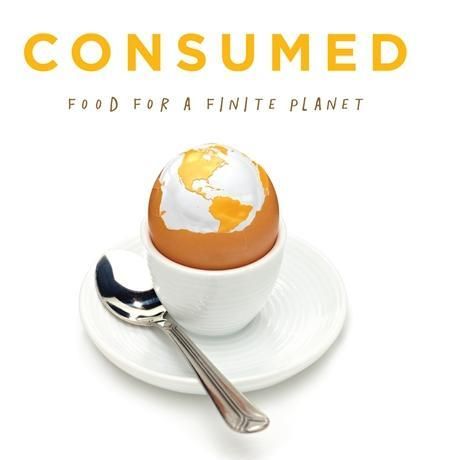Arts
You are here
How will we feed ourselves in 2050?

June 20, 2013
What will the world be like in 2050? In a world of nine billion people, how will we deal with decreasing oil and natural gas reserves, increasing urbanization and the effects of climate change? Author Sarah Elton, in her book Consumed: Food for a Finite Planet, combines all of these to ask the question: how will the world feed itself in 2050?
Today’s industrial food system is affected by everything on this list. Elton argues that in order to best use the finite resources available to us, we need to find alternatives to the industrial food system. Alternatives that are sustainable, based in ethics and human rights, and that maintain ecological balance. She outlines a decade by decade set of targets to be met which she believes are the path that will lead us to food security.
Elton travels to India where she meets with organic farmer Chandrakala Bobade, who epitomizes the first decade’s target: ending industrial farming and making agricultural systems sustainable. Many of India’s farmers are in crisis. They are indebted to companies from which they purchase expensive inputs for their crops—fertilizers, seeds, etc.—yet the returns are too little to pay for the next round of inputs. Thousands of farmers commit suicide each week as their farms fail. Others, like Bobade, have decided to go organic and cut out the expensive fertilizers and seeds. They have increased yields, run successful farmers’ markets, and shown that organic farming can feed a country the size of India.
Farmland itself is under pressure as governments and developers snap up forests, wetlands, and farms to build industrial parks and housing developments, or to plant cash crops for biofuels and the export market. Countries like India are buying up land in Burma, Kenya and Ethiopia to grow the food it needs as it paves over its own farmland. In a world suffering the effects of climate change, sustainable agriculture must have farmland near urban markets. Governments should be actively protecting farmland instead of opening it up to speculators.
Elton’s second decade target is to ensure food security through diversity in the seed supply. While in China, she visits a remote Hani village that farms local rice varieties in terraced paddies irrigated by a stream dammed with rocks, the soil worked by animals and birds. Each rice variety is adapted to the local microclimate and is resistant to local pests.
Farmers are replacing traditional rice varieties with high-yielding hybrid rice varieties. These new varieties are not well adapted, requiring fertilizers and pesticides that harm the fish and ducks that help keep the paddies healthy, as well as the wild foods once gathered.
According to the Food and Agriculture Organization, 75 per cent of crop diversity was lost in the twentieth century. India in the 1950s could boast thirty thousand wild varieties of rice; by 2015 is it likely that number will have dropped to 50 wild varieties. North America 50 years ago had multitudes of varieties of apples, but today most grocery stores carry only a few varieties year round. Food supply is closely tied to the diversity of the gene pool in the seeds of wheat, rice, corn and other crops.
For Elton, it is in the best interest of human survival that seed banks continue to collect seeds, and that publicly supported research continues into development of crop varieties able to survive the conditions predicted in a globally warmed future world. While Elton does not come out fully against genetically modified seeds, she does say that patented seed technologies hinder gains and the free exchange of scientific research into new varieties is necessary.
The third target Elton outlines is more difficult to pin down, but hearkens back to a time when societies were less urbanized and “more connected” to nature. This is similar to the division between city and countryside that Marx describes as a metabolic rift. Elton writes of the food grown in a certain region as having a terroir—a unique taste created by the air, water and soil. It is these things that connect people to the land around them.
However, “cultures of food are eroding” as city dwellers do not experience this same close connection, instead learning the taste of the supermarkets with their pre-roasted chickens and boxes of salad mix. Price and convenience are more important in busy lives than taste and nutrition. Reconnecting with the terroir of locally purchased and “home-cooked” foods may be what is needed to raise a generation concerned about the farmland that sustains them and wanting to take part in the process.
To achieve this requires a food production revolution. The ideas in this book are a good starting point for the changes needed as we move towards 2050.
Section:
Topics:










